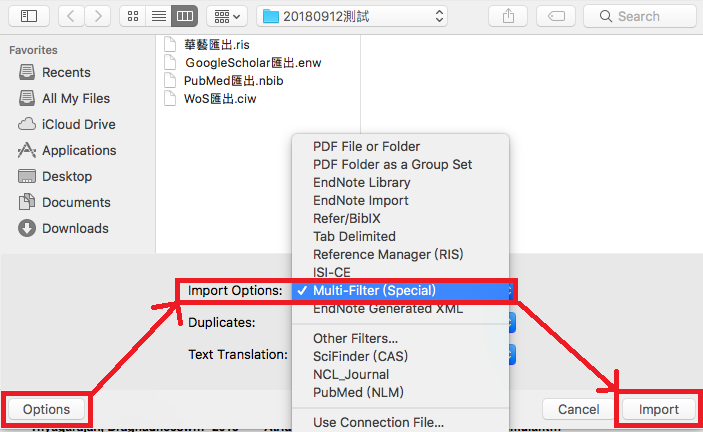
NOTE:Remember the name of the database or platform searched. the references imported from the file are now saved to the folder you selected or into your Unfiled folder.make your selections in the Import Option: (e.g., Reference Manager (RIS)), Duplicates: and Text Translation: drop-down menus.button to find and select the import file on the Import File window, select the Choose.go to to the File menu and select Import > File (or Folder).Once you have saved the references in a file, open EndNote desktop.While in a database, select reference(s) of interest (e.g., mark items to a folder or list).You can save references from many databases and import them into EndNote. EndNote online Help(Clarivate) - this page can also be found within EndNote online by selecting Help in the top right corner.

It is recommended that you save your EndNote library to your device's hard drive. To avoid corruption and performance issues, do not save an EndNote library that you are actively developing within cloud-syncing folders such as Dropbox, Google Drive, One Drive, iCloud or network drives.

Your EndNote library will not work if the data folder is deleted or separated from the. It is important that both of these remain together in the same location and that they use the same name. Your EndNote library consists of two files: a.Video covers creating an EndNote library, importing references from a database, custom groups and adding references, using Find Full Text to download PDFs, inserting references into an MS Word document, and formatting a bibiliography. How to use Endnote 20 in seven minutes - Windows | macOS(Clarivate).This quick reference guide highlights the various components that comprise the EndNote 20 library window. EndNote 20: Library overview - Windows | macOS(Clarivate).Make sure Author names are correct, sometimes they reverse first and last names. UW Catalogue - will automatically download to your Unfiled folder. Web of Science - this will export directly to your Unfiled folder - make sure it is empty, then move the citations to the proper folder Google Scholar - EndNote Import (one at a time) If none of these work, double-check that the text file was saved in the correct format.Īt present, these are the import filters you would employ for the most commonly-used databases: However, there are specific file extensions that denote which filter to use File extension For example, PsycInfo (OVID) or PsycInfo (Ebsco).


Usually, the import filter to use is the one that describes the combination of database and database provider.


 0 kommentar(er)
0 kommentar(er)
